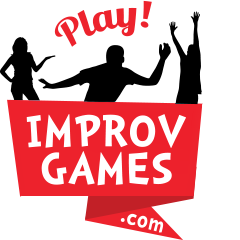Conflict! That’s the necessary ingredient in ALL stories. Right?
Well… let’s challenge that assumption.
So often a struggle between characters plays out on stage as only effort. The actors get louder and more intense. Actors call that “Chewing the Scenery.” In the end it’s simply effort and worst it doesn’t take you, the story or the audience anywhere. It does not develop the story.
And the trap is that conflict ‘feels’ like you’re doing something. As improvisers when we get nervous being on stage (very natural) we feel as if we must ‘do’ something. The fight-or-flight mechanics of our bodies pumps adrenaline into our system and so we must respond.
Why writers use conflict
In storytelling, writers use it so that they can have the characters change. The characters are different after the struggle. But some writers and improvisers believe that conflict is the goal… when, in fact conflict is the tool… and change is the goal.
Consider two character fighting (verbally) with each other:
Bob: Yes, you did.
Janice: No, I didn’t. You did.
Bob: You liar, you did it and you know it.
Janice: You can never prove it… but I can prove you did it…
In an improv scene this can go on and on and on without anyone changing their position. And it feels so gritty and real. But in reality it is agreed upon activity.1 And because there is little chance the characters will change… it is very safe for the actors to enter into this endless “loop” of struggle.
In improv and storytelling, if action serves to change the characters then it’s useful action. If it doesn’t, then it’s just effort.
How do we play with this?
Workshop Activity
We could design an exercise for a workshop:
- Two actors begin an improvised scene where there is no conflict.
- The workshop leader rings a bell and the actors must move into conflict.
- After a period of time, the workshop leader rings another bell and the actors must move out of conflict.
- The workshop leader calls ‘freeze’ and one of the actors steps forward to deliver a short monologue as the character to the audience about what changed as a result of that conflict.
- When he or she steps back the other actor can step forward and do the same.
- The scene can continue or end there.
(1) Keith Johnstone
